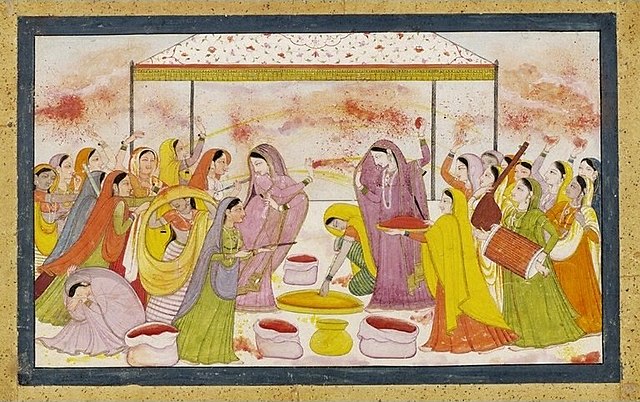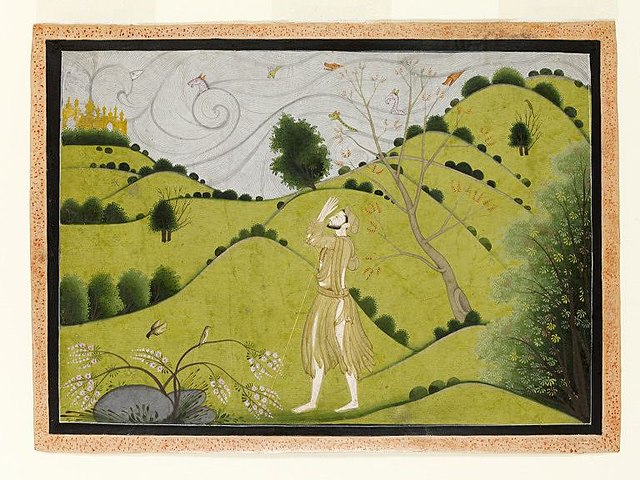Pahari painting is an umbrella term used for a form of Indian painting, done mostly in miniature forms, originating from the lower Himalayan hill kingdoms of North India and plains of Punjab, during the early 17th to mid 19th century, notably Basohli, Mankot, Nurpur, Chamba, Kangra, Guler, Mandi and Garhwal. Nainsukh was a famous master of the mid-18th century, followed by his family workshop for another two generations. The central theme of Pahari painting is depiction of eternal love of Hindu deities Radha and Krishna. A distinct lyricism, spontaneous rhythm, softness, minute intricate details of composition, and intense perception and portrayal of human emotions and physical features distinguish the Pahari miniatures from the other miniature schools like Deccan, Mughal and Rajasthani-Rajput.
Nala-Damayanti theme, from the Mahabharat in Pahari style
Radha celebrating Holi, ca.1788
Sudama bows at the glimpse of Krishna's golden palace in Dwarka. ca.1775–1790
Kali Attacking Nisumbha; c. 1740, colour on paper, 22 × 33 cm, Cleveland Museum of Art
Indian painting has a very long tradition and history in Indian art. The earliest Indian paintings were the rock paintings of prehistoric times, such as the petroglyphs found in places like the Bhimbetka rock shelters. Some of the Stone Age rock paintings found among the Bhimbetka rock shelters are approximately 10,000 years old. Because of the climatic conditions in the Indian subcontinent, very few early examples survive today.
Performance of Patua Sangeet by a Patua, with a pattachitra scroll to illustrate, Kolkata
A mural painting depicting a scene from Mahajanaka Jataka, Cave 1, Ajanta
An Ajanta mural of a royal court
Jahangir Receives Prince Khurram at Ajmer on His Return from the Mewar Campaign, Balchand, c. 1635








